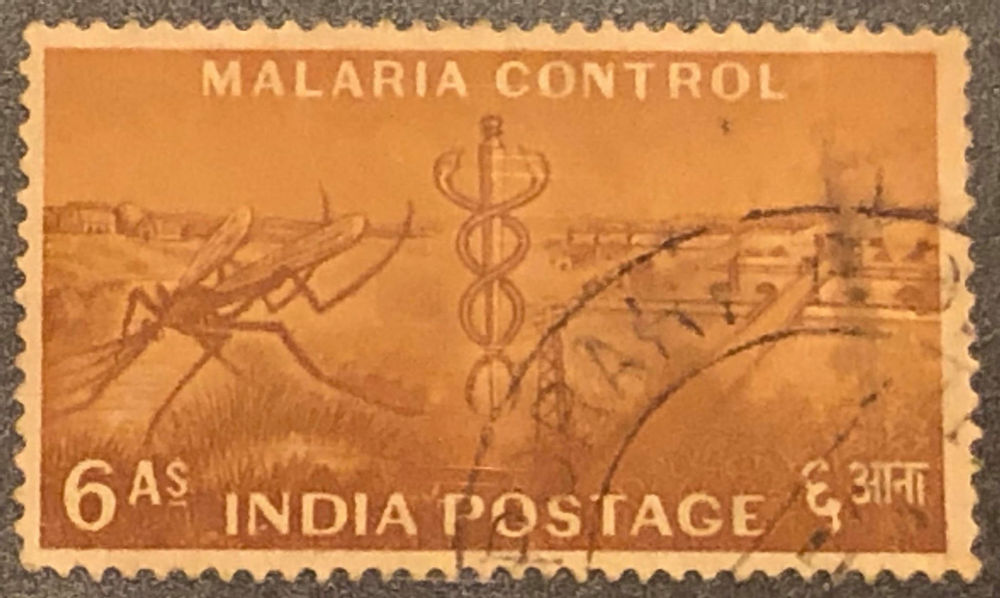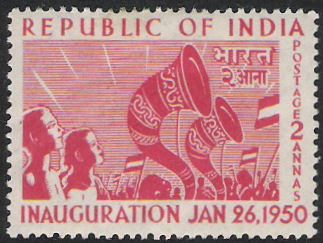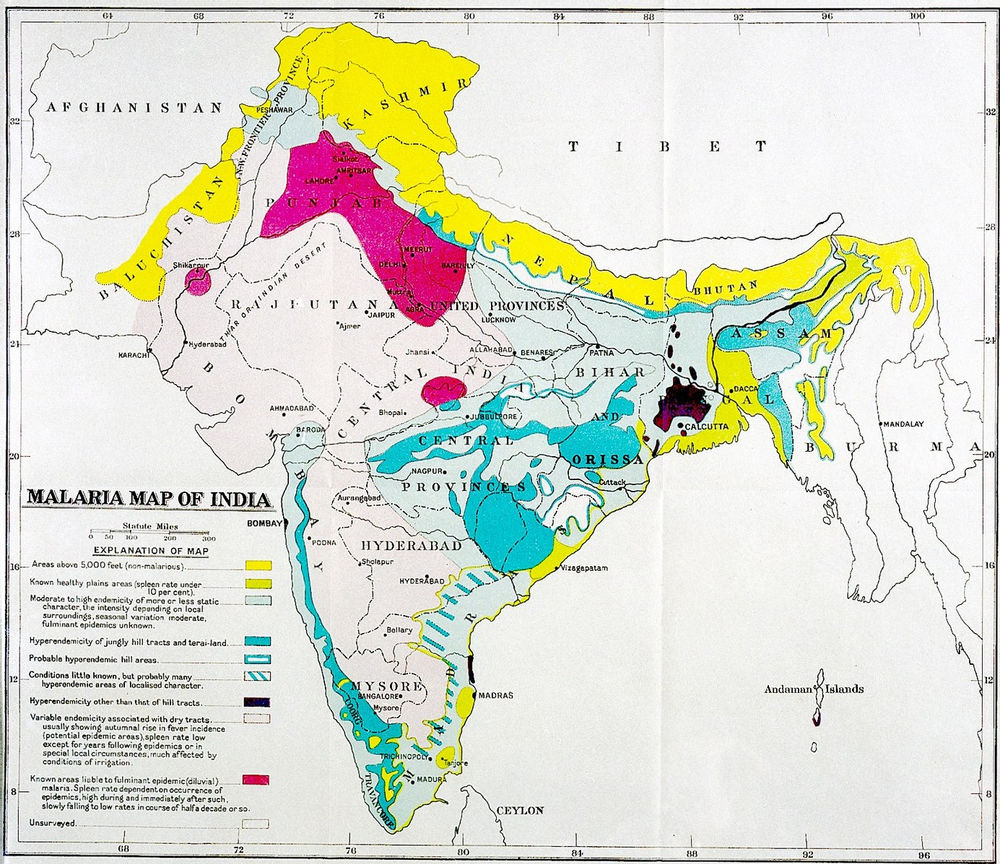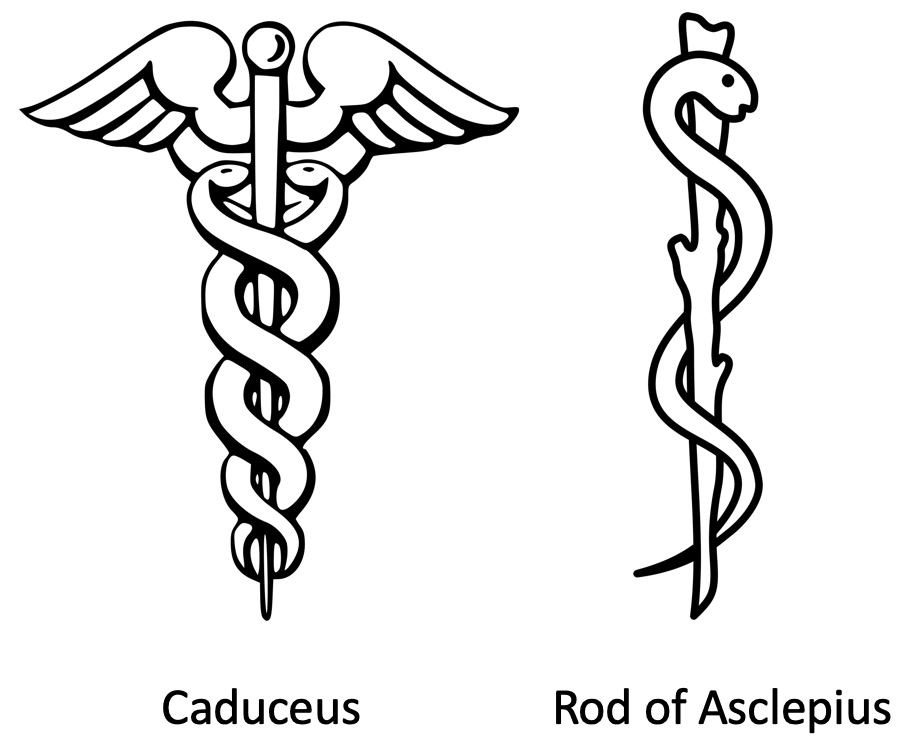Malaria Control in India - 1955
(Published: February, 2021, Volume 21, Number 1, Issue #52) (Table Of Contents)(Author: Anirban Chakraborty)

- India has long felt the burden of malaria, which was the subject of numerous verses in Vedic scriptures written thousands of years ago
- Much more recently (though still in the realm of history classes), the above Indian stamp from 1955 also continued the conversation on this disease.
Where to begin? Let's run through a few of the many fascinating things about this stamp (3)!
- Released by the Indian Postal Service on the fifth anniversary of the Republic of India (January 26th, 1955)
- Part of a definitive* set of 18 stamps on India's first five year plan (1951 to 1956)
- It was the first Indian stamp on a health-related topic (Malaria having been a scourge on India at the time - more to come on that below)
- The stamp is worth 6 Annas. 16 Annas were worth 1 Rupee in independent India until they were demonetized by the 1957 amendment to the Indian Coinage Act of 1906 (if interested in India's fascinating currency shifts, please see the ref. 4!)
Right. Now that we have some greatest hits out of the way, let's go just a bit deeper into the broader context around this stamp in 1955.
India's First Five Year Plan

Chittaranjan Locomotive Works (c. 1950s) (11)
|
India's first five year plan, proposed in 1951 by the Planning Commission of India, represented a centralized set of guidelines, strategies, and priorities intended to address the economic and social development needs of the state. These goals included refurbishing aging railways, establishing more irrigation infrastructure, and enacting strong public health measures (5). In terms of the latter topic, the plan had seven sub-goals, including family planning, education, and (of course) malaria control (6). |

Postage Commemorating the first Republic Day (12)
|
The first five-year plan had high ambitions and important symbolism for the development and prosperity of the still young Republic. It is thus no surprise that it was chosen to represent on postage the fifth anniversary of ROI. However, it is indeed meaningful that out of the numerous health-related goals of the plan, only Malaria control was deliberately singled out to appear on postage that would disseminate among the millions of Indian citizens. This makes sense given the massive impact that the infectious disease had at that time. |
Malaria and India As we've already seen, the history of malaria control is intertwined with that of India. Moreover, it was there that Sir Ronald Ross famously discovered the vector for malaria, the anopheles genus mosquito, in the 1890s. As these mosquitos were able to breed near people in stagnant water and poorly planned irrigation works, British engineers used drainage strategies to environmentally manage the vector population. However, these efforts were largely oriented toward Imperial interests such as tea plantations and military installments. Thus, the disease otherwise ran rampant (with devastating personal effects)

Design of the Stamp

Well, I hope I didn't get too carried away. Let's come back to the stamp in question, shall we? To me, the historical backdrop gives such a heightened appreciation of this stamp that talking about the images alone just doesn't cut it. However, I still want to point out some cool features about this stamp's design.
- The title "MALARIA CONTROL" would appear to be a reference to the National Malaria Control Programme. Notably, the phrase has not been changed to "eradication" yet.
- Of course, a stamp on malaria would not be complete without an image of the female anopheles mosquito, the vector of the disease. Moreover, it is imposed on a backdrop of a water body, reflecting the importance of proper drainage for controlling mosquito breeding. The settlement on the right appears to be a rural village, which makes sense because malaria at this time was largely a "rural disease" (8).
- The staff with two intertwined snakes in the middle of the image is presumably the staff of Hermes (also known as Caduceus). The Caduceus has long been used as a symbol of medicine. It wouldn't be a stretch to connect its appearance in this stamp to the role of antimalarial medicine in disease control. Quinine had been used for malaria treatment for centuries, while 4-aminoquinoline derivatives (ie chloroquine)
-
were discovered as drugs only decades prior to 1955 (9). However, the choice to use Caduceus as a symbol causes this stamp to wade into an interesting academic disagreement. Namely, it is generally believed that the similar but mythologically distinct Rod of Asclepius is actually the correct representation of medicine. Asclepius is the Greek god of healing and the snake further reflects healing due to its traits like longevity. The Caduceus on the other hand is associated in mythology more with "thieves, merchants, and messengers" as Prakash and Johnny put it. It is believed that the US Army Medical Corps initiated this switch on its emblem in 1902. Interestingly enough, the Medical Council of India continues to use the Rod of Asclepius as its symbol today, posing an interesting question as to why the Caduceus was used in the actual stamp (10).
 Both symbols are used to symbolize medicine (14, 15)
Both symbols are used to symbolize medicine (14, 15)
Parting Thoughts
This is my first post in the series on health-related stamp topics. For those of you who stuck with me all the way, I wholeheartedly thank you. For those who didn't, I also wholeheartedly thank you for taking at least some time out of your day to support this work (though I suppose you won't be reading this section in the first place). I have added all of my references below in case you want to engage with them further (and also because it's good practice!). Overall, I think this article is a case study for the beauty of stamp collecting. Our decision to chase just one stamp led us through powerful scientific discoveries, transitions in state governance, and medical symbols. I'll leave you with an apt quote from former President Franklin Delano Roosevelt:
Stamp Collecting dispels boredom, enlarges our vision, broadens our knowledge, makes us better citizens and in innumerable ways, enriches our lives.
References
- Global Malaria Programme, WHO Global. World Malaria Report 2019. WHO, 2019, World Malaria Report 2019.
Kaur, Sagan Deep, and Lakhvir Singh. "Identification of Mosquitoes, Nature of Diseases and Treatment in Early Sanskrit Literature." Indian Journal of History of Science, vol. 52, no. 3, 2017
India Post, and Ministry of Communication & Technology. "DEFINITIVE AND SPECIAL DEFINITIVE STAMPS". Definitive Stamps, Department of Posts, Ministry of Communications, Government of India
"Republic India Coinage.". Reserve Bank of India - Museum, Reserve Bank of India
Vakil, C. N., and P. R. Brahmananda. "Reflections on India's Five-Year Plan." Pacific Affairs, vol. 25, no. 3, 1952, p. 248.
Sethuramalingam, V, et al. "The Five Year Plans In India: Overview of Public Health Policies.". Prime University Journal of Multidisciplinary Quest, vol. 5, no. 1, Aug. 2011, pp. 41-54.
Dash, Aditya P. "Burden of Malaria in India: Retrospective and Prospective View." Defining and Defeating the Intolerable Burden of Malaria III: Progress and Perspectives, by Ashwani Kumar et al., American Society of Tropical Medicine and Hygiene., 2007.
Sharma, V P. "Fighting Malaria in India". Current Science, vol. 75, no. 11, 10 Dec. 1990, pp. 1127-1140.
Anvikar, Anupkumar R. "Antimalarial Drug Policy in India: Past, Present & Future". Indian Journal of Medical Research, vol. 139, no. 2, Feb. 2014, -215., PMID
Prakash, M, and J.C. Johnny. "Things You Don't Learn in Medical School: Caduceus". Journal of Pharmacy and Bioallied Sciences, vol. 7, no. 5, 2015, p. 49.
"A Newly-Built Engine at the Chittaranjan Locomotive Works (c. 1950-60)". Wikimedia Commons, The National Archives UK , 21 Aug. 2012, (No restrictions)
"Inauguration Jan 26 1950". Wikimedia Commons, Government of India, India Post, 1 Jan. 1950, (Public Domain)
Hehir, Patrick. "Sir Patrick Hehir, Malaria in India Wellcome L0026242". Welcome Images , Welcome Collection, 9 Oct. 2014, (License CC 4.0)
Rama. "Caduceus, Large". Wikimedia Commons, 3 Dec. 2004, (Public Domain)
Chiesa, Luigi. "Rod of Asclepius." Wikimedia Commons, 23 Feb. 2010, (Public Domain)
The original article Malaria Control in India - 1955 can be found on the website "Casual Philatelist" and was issued on May 12, 2020.

